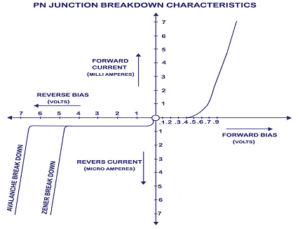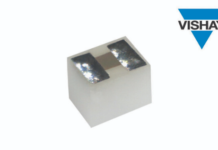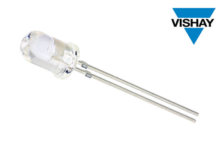
Breakdown is a phenomenon which occurs in a P-N junction diode. When a P-N junction is reverse-biased and the reverse voltage is increased from zero up-to a certain voltage (reverse breakdown voltage), the current quickly rises to its maximum or saturation value.
If the reverse voltage is further increased beyond breakdown voltage (Vbr), the kinetic energy of electrons (minority carriers) becomes so high that they knock out electrons from the semiconductor atoms. At this stage breakdown of the junction occurs and there is a sudden rise of reverse current and the junction is permanently destroyed.
Reverse breakdown occurs due to the following two mechanisms:
- Zener breakdown (at low voltages): The Zener breakdown takes place in junctions which are heavily doped (>1020 impurity atoms/cm3). When a high reverse voltage is applied across the junction, a strong electric field appears at the junction and the electron hole pair generation takes place and thus heavy current flows. The temperature coefficient of the Zener is negative. When the temperature is increased its breakdown voltage decreases and the ionization of Zener is due to electric field.
- Avalanche breakdown (at higher voltages): The Avalanche breakdown takes place in junctions which are lightly doped (having wide depletion layers). The Avalanche breakdown occurs in the thick region and produces a pairs of electrons as well as holes because of thermal effects. The temperature coefficient of the Avalanche is positive. When the temperature is increased the avalanche increases and the ionization of Avalanche is due to collision of electrons.















